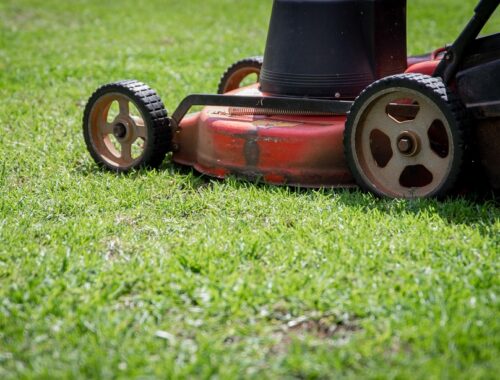How to Properly Fertilize Your Lawn for Optimal Growth

A lush, green lawn is a source of pride for many homeowners, but achieving and maintaining such a lawn requires effort and know-how. One of the key factors in achieving a healthy and vibrant lawn is proper fertilization. Fertilizing your lawn is more than just a matter of spreading some chemicals on the grass; it involves understanding the specific needs of your lawn, selecting the right type of fertilizer, and applying it at the correct times. In this comprehensive 2000-word guide, we will explore the intricacies of lawn fertilization, including the why, when, what, and how of proper lawn care, to help you achieve optimal growth and a beautiful lawn that you can be proud of.
The Importance of Lawn Fertilization
Lawn fertilization is essential for several reasons:
1. Nutrient Supply: Grass, like all plants, requires essential nutrients for growth. Fertilizers provide these nutrients, which can become depleted over time due to mowing, rainfall, and other environmental factors.
2. Health and Vigor: Fertilizing your lawn ensures it remains healthy and vigorous. Well-fertilized lawns are better able to withstand stress from pests, diseases, and environmental conditions.
3. Aesthetic Appeal: Properly fertilized lawns are lush, green, and aesthetically pleasing. They enhance the curb appeal of your home and provide a pleasant outdoor space for your family.
Weed and Pest Control: A well-fertilized lawn is less susceptible to weed infestations and pest damage. The dense growth of healthy grass can outcompete weeds and resist pests more effectively.
Enhanced Root Development: Fertilization can promote robust root growth, which, in turn, improves the lawn’s ability to access water and nutrients from the soil.
Understanding Lawn Fertilizer Basics
Before delving into the details of proper fertilization, it’s essential to grasp some fundamental concepts about lawn fertilizers.
1. NPK Ratio: Fertilizers are labeled with an NPK ratio, which represents the percentage by weight of the three primary macronutrients they contain: nitrogen (N), phosphorus (P), and potassium (K). These nutrients serve different purposes in plant growth:
- Nitrogen (N): Promotes leafy, green growth.
- Phosphorus (P): Supports root development, flowering, and fruiting.
- Potassium (K): Aids in overall plant health and disease resistance.
2. Slow-Release vs. Quick-Release: Fertilizers can be categorized as slow-release or quick-release. Slow-release fertilizers provide nutrients gradually over an extended period, while quick-release fertilizers deliver nutrients rapidly. Slow-release fertilizers are often preferred for lawns as they provide a more consistent, steady growth without the risk of over-fertilization.
3. Granular vs. Liquid Fertilizers: Fertilizers come in granular or liquid form. Granular fertilizers are applied with a spreader and are easy to control. Liquid fertilizers are mixed with water and applied with a sprayer. Each type has its advantages, depending on the specific needs of your lawn.
The Right Way to Fertilize Your Lawn
Proper lawn fertilization involves a series of steps and considerations to ensure optimal growth and health. Let’s break down the process.
1. Determine Your Grass Type
The first step in proper lawn fertilization is to identify the type of grass in your lawn. Different grass species have varying nutrient requirements, and understanding your grass type will help you select the right fertilizer and application schedule. Common grass types in the United States include:
- Kentucky Bluegrass
- Bermuda Grass
- Zoysia Grass
- St. Augustine Grass
- Fescue Grass
2. Soil Test
A soil test is a crucial step in determining the specific nutrient needs of your lawn. Soil testing kits are available at most garden centers, or you can send a sample to a local agricultural extension service. The test will provide insights into your soil’s pH and nutrient levels. Based on the results, you can choose a fertilizer that addresses any deficiencies and balances the soil’s pH.
3. Select the Right Fertilizer
With knowledge of your grass type and soil condition, you can choose the appropriate fertilizer. Look for a fertilizer with the NPK ratio that matches your lawn’s requirements. For example, a fertilizer with a ratio of 20-5-10 is suitable for a balanced, all-purpose application. Slow-release fertilizers are often the preferred choice, as they provide nutrients over a more extended period, reducing the risk of over-fertilization and nutrient runoff.
4. Timing is Everything
Timing is critical when it comes to lawn fertilization. The two primary seasons for fertilizing are spring and fall. Spring fertilization encourages green, leafy growth, while fall fertilization prepares the lawn for the winter and promotes strong root development. The specific timing may vary depending on your region and climate. For example, in cooler climates, it’s often best to fertilize in early spring and early fall. In warmer climates, you might consider a late spring and late summer fertilization schedule.
5. Correct Application
The method of fertilizer application depends on whether you’re using granular or liquid fertilizer.
For Granular Fertilizer:
- Use a broadcast or drop spreader to apply the fertilizer evenly across the lawn.
- Calibrate the spreader to ensure the correct application rate, following the instructions on the fertilizer packaging.
- Apply half of the fertilizer in one direction and the other half at a 90-degree angle to ensure uniform coverage.
For Liquid Fertilizer:
- Mix the liquid fertilizer with water according to the manufacturer’s instructions.
- Apply the mixture evenly using a sprayer or irrigation system.
- Water the lawn thoroughly after application to help the fertilizer penetrate the soil.
6. Watering After Fertilization
After applying the fertilizer, it’s essential to water your lawn. Watering helps the fertilizer reach the root zone and prevents it from sitting on the grass blades, which can lead to burning. Watering immediately after fertilization is especially crucial for granular fertilizers. Aim to provide about 1 inch of water to ensure thorough coverage.
7. Safety Precautions
Fertilizers are chemicals that should be handled with care. Here are some safety precautions to keep in mind:
- Wear appropriate protective gear, including gloves and safety glasses, when handling fertilizers.
- Follow the manufacturer’s instructions for storage, handling, and disposal.
- Keep children and pets away from the treated area until the fertilizer has been watered in and the grass is dry.
- Prevent fertilizer runoff into storm drains, as it can harm the environment.
8. Post-Fertilization Maintenance
Proper lawn care doesn’t end with fertilization. To maintain optimal growth, you should continue with regular lawn care practices, including mowing, watering, and pest control. Here are some tips to keep in mind:
- Mowing: Keep your lawn at the recommended height for your grass type. Mowing too short can stress the grass and inhibit growth.
- Watering: Water deeply and infrequently to encourage deep root growth. Early morning is the best time to water your lawn.
- Pest Control: Keep an eye out for pests and diseases, and address issues promptly to prevent damage to your lawn.
Common Mistakes to Avoid
To achieve optimal growth through proper fertilization, it’s crucial to avoid common mistakes that can harm your lawn. Here are some mistakes to steer clear of:
Over-Fertilization:
Applying too much fertilizer can burn the grass, lead to nutrient runoff, and harm the environment. Always follow recommended application rates.
Under-Fertilization:
Neglecting to fertilize your lawn can result in nutrient deficiencies and poor growth. Regular fertilization is essential for lawn health.
Ignoring Soil pH:
Fertilizers should be chosen based on your soil’s pH level. Ignoring soil pH can lead to inefficient nutrient absorption.
Incorrect Timing:
Fertilizing at the wrong time of year can lead to imbalanced growth and poor root development.
Uneven Application:
Inconsistent application of fertilizer can result in uneven growth and patchy areas in your lawn.
Organic vs. Synthetic Fertilizers
A debate exists over whether organic or synthetic fertilizers are the better choice for lawn care. Each type has its pros and cons:
Organic Fertilizers:
- Pros:
- Slow-release nutrients that benefit the soil and promote long-term health.
- Improve soil structure and microbial activity.
- Environmentally friendly, as they pose minimal risks to waterways and ecosystems.
- Cons:
- Slower to show results compared to synthetic fertilizers.
- May have a lower nutrient content.
Synthetic Fertilizers:
- Pros:
- Quick-release nutrients that provide rapid green-up.
- Highly customizable, with specific NPK ratios to address nutrient deficiencies.
- Convenient and widely available.
- Cons:
- Potential for nutrient runoff, which can harm the environment.
- Limited long-term soil health benefits.
The Sustainable Approach
A sustainable approach to lawn fertilization takes into account the long-term health of your lawn and the environment. Here are some tips for sustainable fertilization:
- Use slow-release fertilizers to reduce the risk of nutrient runoff.
- Choose a fertilizer with a balanced NPK ratio that matches your soil’s needs.
- Incorporate organic matter into your soil to improve its structure and nutrient-holding capacity.
- Follow proper mowing and watering practices to maintain a healthy lawn.
- Consider alternatives to traditional lawns, such as xeriscaping or planting native grasses that require less fertilizer and water.
Properly fertilizing your lawn is a crucial step in achieving optimal growth and maintaining a beautiful and healthy outdoor space. By understanding your grass type, conducting a soil test, and selecting the right fertilizer, you can provide the essential nutrients your lawn needs to thrive.
Remember that timing, application, and safety precautions are equally important aspects of the fertilization process. Avoid common mistakes, choose between organic and synthetic fertilizers based on your preferences and values, and consider a sustainable approach to lawn care.
With the right knowledge and practices, you can transform your lawn into a vibrant, lush, and thriving landscape that enhances the beauty of your home and provides a pleasant outdoor environment for your family and guests. Proper lawn care and fertilization go hand in hand to achieve these results, and they are well worth the effort and investment.
You May Also Like

Common Lawn Problems and How to Solve Them
August 27, 2023
Lawn Mowing Best Practices for a Professionally Manicured Look
October 5, 2023
